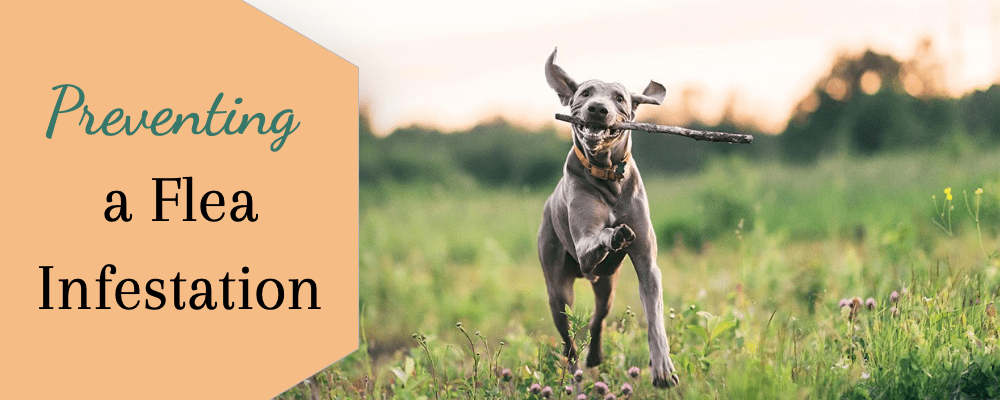The best way to prevent a flea infestation is to stop it before it can start! When spring arrives and the weather starts to get warm, don’t wait until you notice fleas on your pets or their playmates. Like any pet owner, you want to keep fleas and ticks from bothering your pet and moving into your home.
Don’t wait for a flea infestation to occur, and then struggle to get it under control. Infestations can take weeks or months to control due to the delayed hatching of flea eggs. But by taking some precautions, you can prevent them from starting in the first place.
These four steps can help you make your home less inviting to these little bloodsuckers. Some of them start even before you walk through the front door.
- Troubleshoot Your Yard.
The first line of defense is keeping fleas and ticks from setting up housekeeping on your property.
If you live in a home with a yard, that means keeping your grass mowed and shrubs trimmed back. This simple landscaping move is the opposite of curb appeal to fleas and ticks because they have less place to hide.
Next, discourage feral pets and wildlife from coming into your yard and bringing their fleas with them. Opossums, raccoons, and feral cats are the worst offenders. Don’t invite these critters by leaving bowls of dog or cat food outside.
Trim back any trees and high shrubs that could let wild animals crawl into your attic. Seal off any openings to crawl spaces, garages, sheds, or under decks, where wild animals or stray dogs or cats could nest.
When planting shrubs, keep them away from your house and each other. Any time you have air movement and sunlight it will kill flea larvae.
Consider professional pest control. This option isn’t always in a pet owner’s budget, and it should always be considered carefully to ensure the best health for your pets. This can also help prevent other potentially nasty bugs from biting you and your animals, including mosquitoes. If professional pest control is not an option, we have yard sprays that you can use.
- Practice Prevention.
Some pet owners use spot-on flea and tick treatments on their pets, but the newer oral medications are often safer and more effective. Plus you can’t wash them off!
When you bring your pet home from an outing, run a flea comb or brush through your pet’s coat before going inside to check for pests he may have picked up along the way.
Do you have a long-haired pet? It’s easier for pests to hide there. So consider having your pet shaved down for the summer, making it easier to spot problems.
- Keep Your Home Clean.
Having fleas and ticks in your house doesn’t mean your home is dirty. But if you pay careful attention to certain areas, you can make pests less welcome. The three stages of immature fleas (flea eggs, larvae, and pupae) often live in carpeting or throw rugs. So vacuum at least once a week, and more often if you spot fleas and make sure your pet’s favorite spaces are regularly cleaned/washed, aired out, and preferably getting plenty of sunlight.
